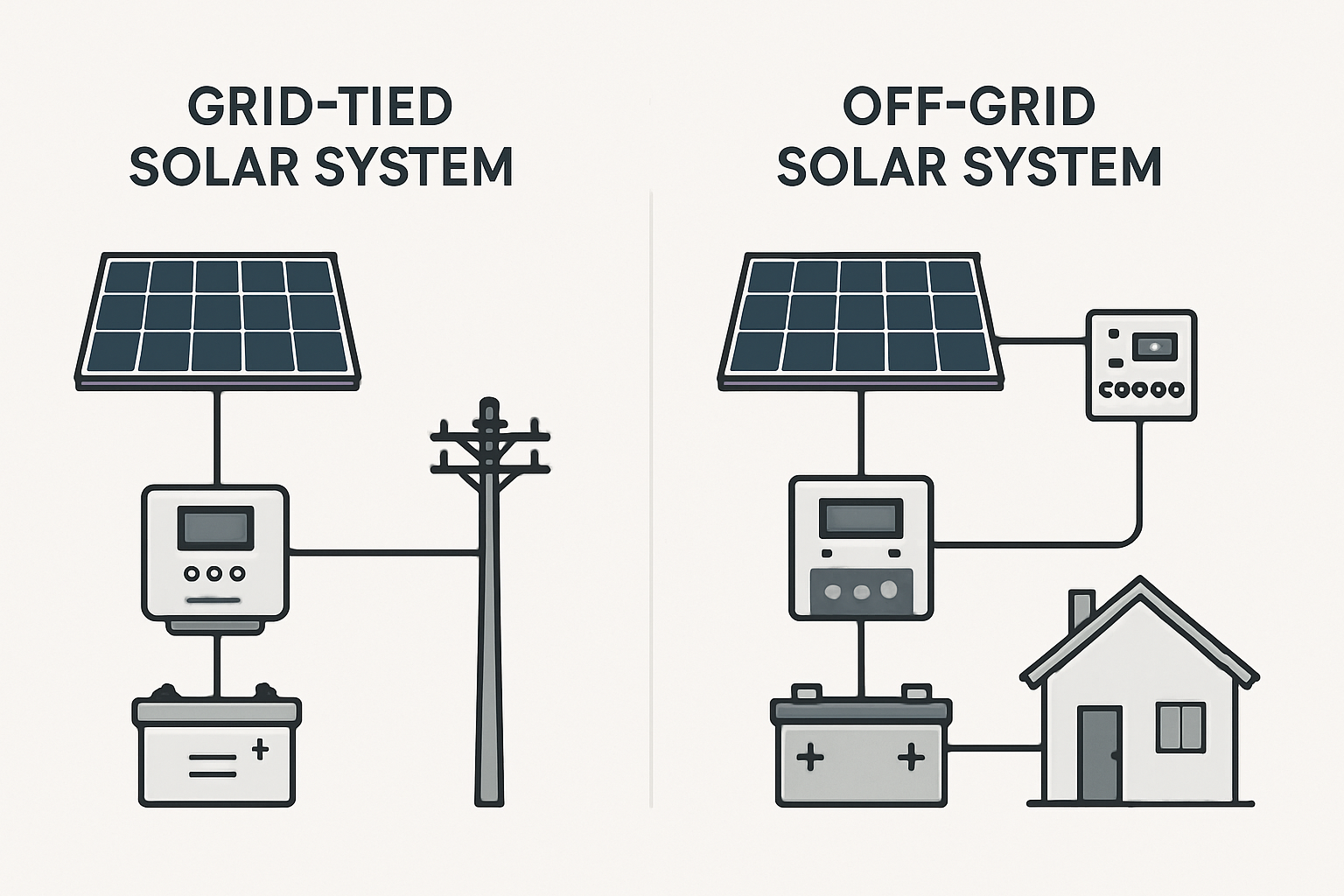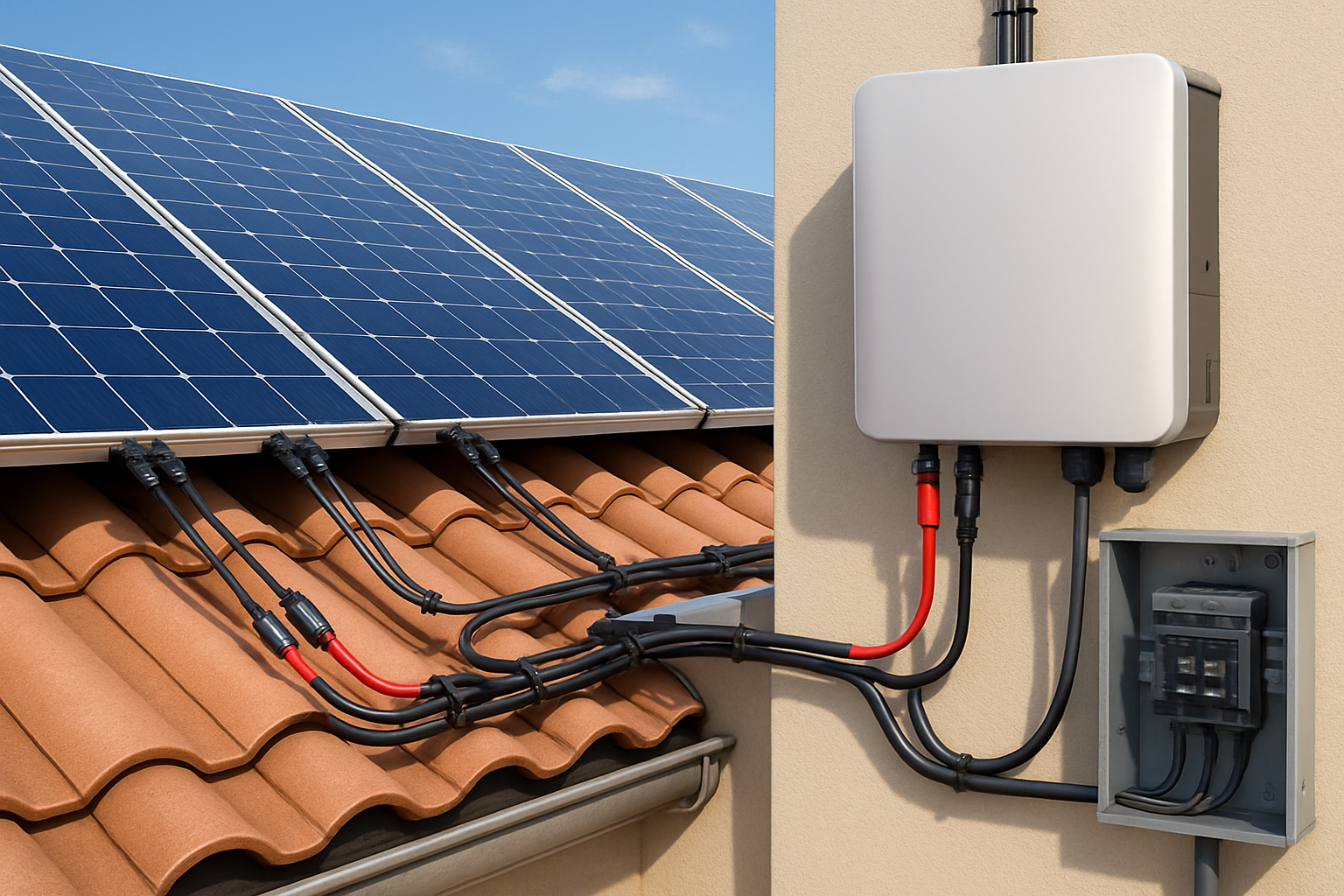Designing a photovoltaic (PV) system that remains fail-safe under faulted states requires more than component selection; it requires a verifiable protection philosophy. In this note I focus on the two pillars that bound risk in PV balance-of-system (BOS) engineering: manual isolation via disconnecting means on both the DC and AC sides, and automatic interruption via overcurrent protection (OCP). The objective is to constrain fault energy—I²t—below the thermal limits of conductors and terminations while preserving selectivity. I present the functional roles, placement logic, and sizing heuristics that align with widely adopted codes.
Functional Role of Disconnects
Disconnecting means provide visible, lockable isolation for work on energized parts and for emergency operations. In field practice I require independent isolation on the photovoltaic source circuit(s), the inverter DC input, and the inverter AC output to the premises wiring or point of common coupling (PCC). For rapid hazard abatement, isolation must be unequivocal: blades open, no residual backfeed paths, and clear labeling.
DC Disconnects
PV modules and strings remain current-limited sources whose short-circuit current Isc varies with irradiance and temperature. A DC disconnect upstream of the inverter interrupts this current at the array boundary. The device must be rated for continuous operation at 1.25 × Imp (or 1.56 × Isc for protective calculations in cold conditions) and have a DC voltage rating exceeding the array maximum system voltage under minimum expected cell temperature. In my commissioning checklists, I verify that opening under load (if permitted by the device) occurs without arcing across contacts at the system's open-circuit voltage Voc,cold.
AC Disconnects
On the AC side, an external, readily accessible disconnect at the PCC allows utility personnel to de-energize the distributed energy resource. The inverter output breaker or switch must be listed for AC duty at the nominal system voltage and fault-duty available at the panel. Where backfeed is possible, I specify a lockable, visible open switch so that the inverter cannot energize the grid segment under maintenance.
Overcurrent Protection and Energy Limitation
Overcurrent protective devices interrupt abnormal currents from short circuits, ground faults, and backfeed. The engineering target is to clear faults before insulation or terminations exceed their allowable temperature rise. I size devices to avoid nuisance tripping at 125% of maximum continuous current while ensuring prompt operation for prospective fault currents.
Fuses vs. Circuit Breakers
Time-current curves reveal complementary behavior. Current-limiting fuses reduce let-through energy (I²t), benefiting delicate conductors in combiner outputs. Thermal-magnetic breakers provide reset capability and adjustable trip bands. In multi-stage protection, I often combine string fusing with a feeder breaker to achieve selectivity—only the faulted section isolates while the remainder of the plant remains online.
Sizing Rules and Coordination
- String OCP: Required when more than two strings are paralleled. Fuse rating typically ≥ 1.25 × Isc,string and ≤ conductor ampacity; voltage rating ≥ array max voltage.
- Feeder/Combiner OCP: Continuous current set at 1.25 × sum of string currents; device rating chosen so that downstream string fuses clear before the feeder trips for single-string faults.
- Inverter AC OCP: Per nameplate output current, with conductor ampacity and breaker rating not less than 125% of continuous output. Backfeed allowances must observe busbar ratings and load-side interconnection limits.
With inverter-based resources, fault current is curtailed by control electronics. The effective fault duty can be 1.1–1.25 p.u. of rated current, which is insufficient to trigger legacy instantaneous trips. Hence I prefer protection schemes that consider controlled current sources: ground-fault relays, residual current devices, and arc-fault detection where mandated, supplemented by time-delayed elements coordinated to measured fault duties.
Placement and Accessibility
I position disconnects at the array boundary and at the inverter, both marked and reachable without tools. For rooftop arrays, rapid shutdown devices at the module or array level reduce energized conductors outside the array boundary during emergency response. On the AC side, the utility-accessible disconnect is mounted within sight of the meter or as required by the interconnection agreement.
Verification and Commissioning
Commissioning is not administrative; it is evidentiary. I document: (1) nameplate and listing of all disconnects and OCPDs; (2) torque and insulation integrity checks; (3) measured Voc, Isc, and functional trip tests against device curves; (4) labels consistent with conductor polarity and source citation. Only after selective trip verification do I release the system to service.
Regulatory Anchors
While local adoption varies, the design heuristics above align with widely referenced provisions for PV systems and distributed resources. For further reading:
- NFPA 70 (NEC) — Articles 690, 705
- IEEE 1547-2018 — Interconnection and Interoperability
- UL 98 — Enclosed Switches and UL 489 — Molded-Case Circuit Breakers
- NREL — Photovoltaic Resource and Systems
FAQs
Do I need string fuses for every array?
Only when three or more strings are paralleled, or when reverse-feed from other strings can exceed a string’s conductor rating. Two-string arrays with properly rated conductors often do not require string OCP.
Why do my breakers not trip during faults on an inverter output?
Because modern inverters limit fault current, instantaneous trips may not engage. Use coordinated time-delay elements and ground-fault/arc-fault detection suited to current-limited sources.
Can I operate the DC disconnect under load?
Only if the device is listed and rated for load-break DC at your system’s maximum voltage. Otherwise, shut down at the inverter per manufacturer procedure before opening.





Leave a comment
All comments are moderated before being published.
This site is protected by hCaptcha and the hCaptcha Privacy Policy and Terms of Service apply.